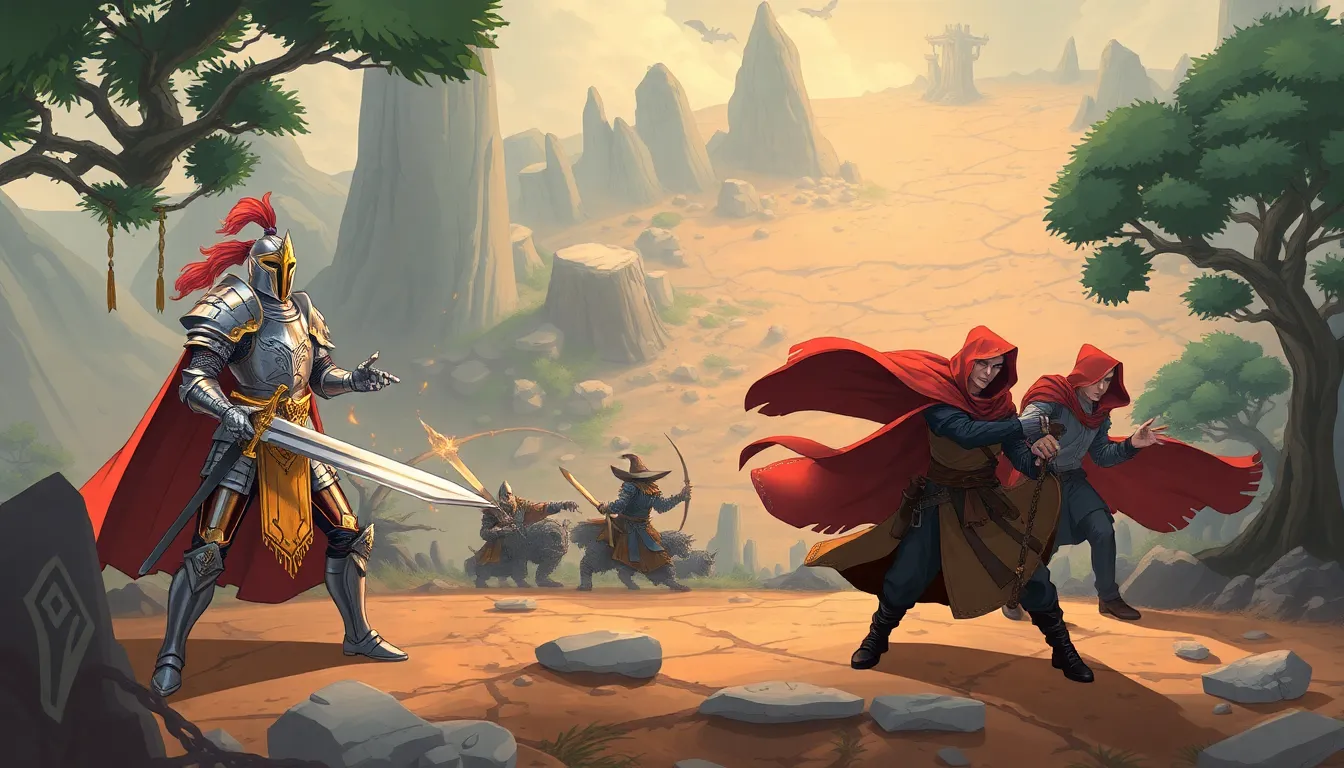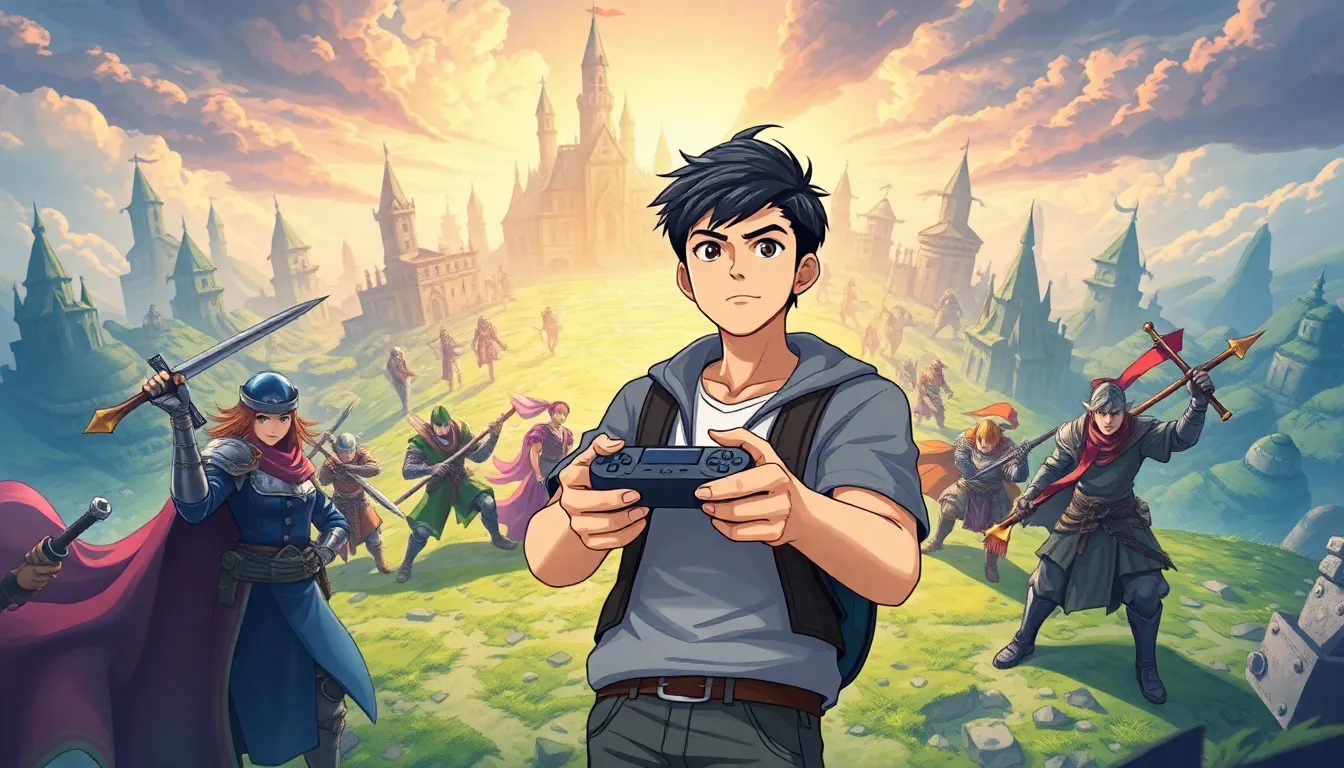Tactical RPG games are like a chess match on steroids—strategic, intense, and packed with epic battles that keep players on the edge of their seats. Imagine commanding a band of quirky heroes, each with unique abilities, as they navigate treacherous terrains and face off against dastardly foes. If that doesn’t get your heart racing, maybe you should check your pulse!
These games blend strategy with storytelling, offering a rich experience that’s both mentally stimulating and downright fun. Whether it’s plotting your next move or watching your meticulously crafted team unleash chaos on the battlefield, tactical RPGs deliver thrills that keep players coming back for more. So grab your controller and prepare for a wild ride—this isn’t just a game; it’s a tactical adventure that’ll make you laugh, think, and maybe even shed a tear or two.
Tactical RPG Games
Tactical RPG games combine strategy, planning, and storytelling for immersive experiences. Players command teams consisting of unique heroes, each with distinct abilities and roles. These characters often develop through skill progression, adding depth to gameplay. Engaging in intense battles requires players to analyze the battlefield and consider positioning carefully.
Terrain plays a significant role; different landscapes can impact movement and strategy. For example, mountains can provide defense, while rivers can hinder movement. Players navigate these environments to gain tactical advantages.
Narrative elements enhance the experience, intertwining plot with gameplay. Characters often face moral dilemmas and challenges that shape their progression. These decisions contribute to character development and influence the overarching story.
Many titles in the genre have established fan bases, proving the genre’s popularity. Iconic games like “Fire Emblem” and “XCOM” have garnered critical acclaim for their strategic depth. The blend of combat and story keeps players invested in their heroes’ journeys.
Multiplayer features are also present in some tactical RPGs, allowing players to face off against each other. Competitive elements can elevate the stakes, fostering a sense of community among players.
Diverse settings and themes exist, ranging from medieval fantasy to futuristic sci-fi. This diversity attracts a wide range of gamers, offering various narrative experiences and gameplay styles. Ultimately, tactical RPGs provide rich and engaging adventures, satisfying the cravings of strategy enthusiasts.
Key Elements of Tactical RPG Games

Tactical RPG games showcase several core elements that contribute to immersive gameplay experiences. Understanding these key components enhances appreciation for the genre’s complexity and depth.
Combat Mechanics
Combat mechanics define the core of tactical RPG gameplay. Turn-based systems create an environment where each player must think critically about their moves. Players need to position characters strategically on varied terrain to gain advantages. Attack patterns vary significantly between characters, forcing players to adapt their strategies. Enemy AI poses additional challenges, requiring quick adjustments to tactics. Some games incorporate unique abilities or skills that can turn the tide of battle. Overall, mastering these mechanics drives players toward victory.
Character Development
Character development adds depth to tactical RPGs. Players experience unique progression paths for each hero based on their actions and choices. Skill trees allow customization, giving players the chance to shape their characters to fit specific roles. Levels signify growth, unlocking new abilities and enhanced stats. Players often encounter moral dilemmas that influence character traits, affecting both gameplay and narrative outcomes. This emotional connection to characters fosters investment in the game, enhancing immersion and enjoyment. Engaging with character development creates memorable gameplay experiences.
Popular Tactical RPG Games
Several tactical RPG games stand out for their engagement and strategic depth. Players enjoy the variety and complexity these games offer in both classic and modern installments.
Classic Titles
“Fire Emblem” delivers a robust tactical experience, known for its permadeath feature that heightens stakes. Players command diverse heroes with unique abilities and navigate challenging maps that demand strategic planning. “Final Fantasy Tactics” provides an intricate job system along with a captivating narrative, appealing to fans of deep character customization. “Tactics Ogre” presents players with moral choices that influence storylines and gameplay. Each of these titles has set a standard in the genre, creating memorable experiences for players.
Modern Releases
Recent titles continue to innovate within the tactical RPG genre. “XCOM 2” combines traditional tactical gameplay with a rich sci-fi narrative, requiring players to adapt strategies against intelligent AI. “Gears Tactics” merges familiar elements of the Gears of War universe with turn-based action, emphasizing squad management and cover mechanics. “Triangle Strategy” incorporates a unique decision-making system that affects character alignments and plot progression. These modern releases expand the tactical RPG landscape while maintaining core gameplay elements that fans appreciate.
Tactical RPG Games vs. Other Genres
Tactical RPGs stand apart from traditional role-playing games due to their emphasis on strategic combat and planning. Unlike action RPGs, which often feature real-time battles, tactical RPGs utilize turn-based systems where critical thinking dictates the flow of gameplay. Players must carefully analyze each move, considering the positioning of characters and terrain effects.
Real-time strategy games also differ significantly. In those titles, players generally control multiple units simultaneously, whereas tactical RPGs focus on individual character development and skill progression. Each character has unique abilities, allowing for varied combat strategies that adapt to the challenges presented by enemies.
Moreover, narrative elements in tactical RPGs play a crucial role in defining the player’s experience. Narrative depth often contrasts with straightforward storytelling found in some other game genres. In tactical RPGs, moral dilemmas can shape character arcs and influence narrative outcomes, creating a more immersive adventure.
Multiplayer options enhance engagement in tactical RPGs, providing a sense of community that single-player experiences may lack. While many genres include multiplayer components, the cooperative and competitive aspects in tactical RPGs foster deeper connections among players.
Influential titles in tactical RPGs like “Fire Emblem” and “XCOM” contributed significantly to the genre’s popularity. In comparison, other genres may rely on different gameplay mechanics, yet they often lack the strategic intricacies found in tactical RPGs. Variety exists across genres, but none offer the same level of combination between strategy, character development, and rich storytelling that tactical RPGs provide.
Conclusion
Tactical RPGs stand out in the gaming landscape for their unique blend of strategy and storytelling. Players immerse themselves in rich narratives while honing their tactical skills through turn-based combat. The genre’s ability to evoke emotional connections with characters adds depth to the gameplay experience.
With a variety of settings and innovative mechanics, tactical RPGs cater to a broad audience. Whether navigating medieval battles or futuristic conflicts, these games challenge players to think critically and adapt their strategies. The ongoing evolution of the genre ensures that tactical RPGs will continue to captivate players for years to come.

